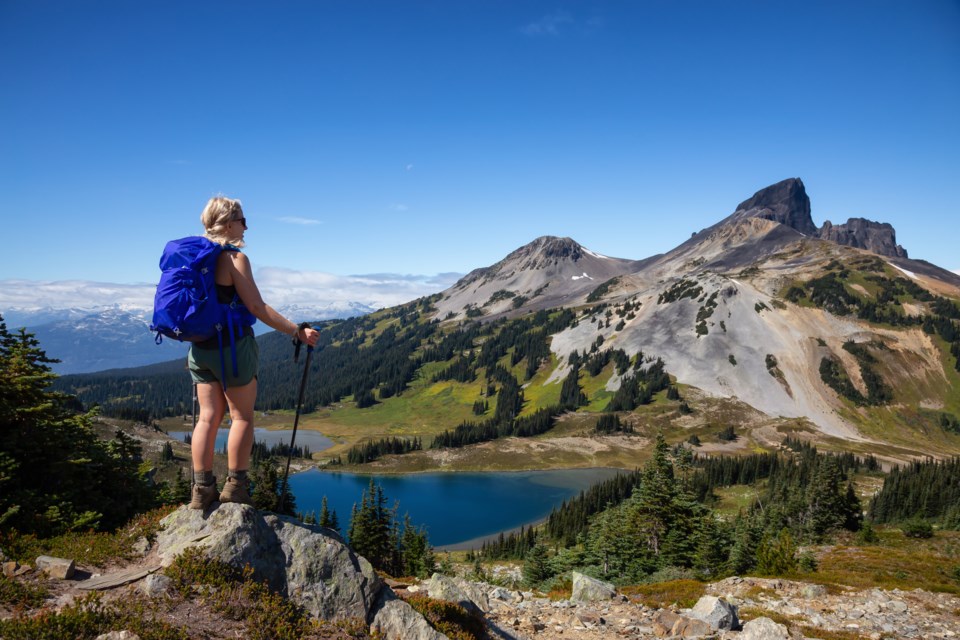In June, the Outdoor Recreation Council of BC (ORCBC) shared findings from a recent survey detailing outdoor rec habits and preferences among British Columbians.
According to that survey, nearly seven out of every 10 adult sa���ʴ�ý residents have participated in outdoor recreation in the past 12 months, and 2.8 million adult British Columbians enjoyed the outdoors last year.
And it’s not hard to see why, according to the ORCBC.
“Outdoor recreation provides many benefits, including community health and social inclusion, reconciliation through Indigenous involvement in recreation planning and management, connection to nature, and economic benefits such as jobs and tourism,” said ORCBC executive director Louise Pedersen, in an email. “A recent economic study indicates that outdoor recreation in sa���ʴ�ý provides more than $15 billion in economic value to British Columbians annually.”
Despite those clear benefits, little has been done in the past 20 years to support the sector, Pedersen said.
“Underfunding, increased recreational use, and the impacts of climate change put more pressure on sa���ʴ�ý's recreation infrastructure and natural spaces, which elevates the need for volunteers to perform important repair and safety work, educate trail users about key outdoor concepts such as preparedness and leaving no trace, and work with land managers to mitigate the substantial effects of climate change-induced wildfires, flooding and erosion,” she said.
For those reasons, the ORCBC has advocated “for several years” for a comprehensive outdoor recreation strategy for the province, along with adequate resourcing to implement it, Pedersen added.
The organization may finally get its wish, as the provincial Ministry of Environment and Climate Change Strategy is leading a project to develop a shared vision of outdoor recreation service delivery in the province.
According to a ministry spokesperson, the aim is to “position the province of sa���ʴ�ý and Indigenous communities to plan, develop and/or manage the diverse range of outdoor recreation opportunities balancing public interests, conservation and stewardship.”
The opportunity arose after a recent inter-ministerial shuffle.
Last year, Recreation Sites and Trails BC was reorganized from the Ministry of Forests into the Ministry of Environment and Climate Change Strategy as a branch, alongside BC Parks, in the Conservation and Recreation Division, the spokesperson explained.
“With these two agencies in the same division, the opportunity arose to align these provincial agencies that both directly manage outdoor recreation on public lands as well as those agencies that have a role in supporting recreation opportunities or have a vested interest in outcomes associated with a healthy outdoor recreation sector,” they said.
“A shared provincial vision will ensure the province remains an exceptional jurisdiction for outdoor recreation and that the province’s approach is aligned with the commitments to Indigenous reconciliation and environmental stewardship.”
Project objectives include: Developing a shared vision (and principles) for managing outdoor recreation on provincial public lands; incorporating Indigenous perspectives and identifying opportunities to further reconciliation in provincial delivery of recreation management; making recommendations and developing a strategy to align service delivery and organizational structures to achieve the shared recreation vision; and developing a medium- and long-term digital strategy for the BC Parks, Recreation Sites and Trails Division to support effective service delivery over the next decade.
The project will build on the extensive public engagement that Rec Sites and Trails and BC Parks conducted for a provincial trails strategy in 2021, and will engage broadly with the outdoor recreation sector. In-person and virtual sector engagement sessions are scheduled over the next few months.
Residents in Whistler are encouraged to engage through groups like the Whistler Off Road Cycling Association and Tourism Whistler, the spokesperson said, adding that ministry staff will be talking with such groups “at various stages throughout the planned two-year project and into implementation.”
The strategy is an “excellent initiative,” said Walt Judas, CEO of the Tourism Industry Association of BC (TIABC), particularly as the last strategy is about two decades old.
“I think it’s very necessary from many perspectives: for land-use planning, for tenure security, for development of new opportunities, for being able to … operate in conjunction with the other natural resource sectors,” he said.
But importantly, TIABC sees the process as an opportunity to ensure that tourism is a significant part of the strategy, he added.
“So you have recreation, which in a general sense is everybody, every resident and visitor that is able to participate in activities and parks and in the backcountry hiking and fishing and all those wonderful things, but there is a commercial side to this, too, that cannot be overlooked, and it’s critical that it be incorporated into the broader recreation strategy,” Judas said.
“That’s really what our goal as an industry is, to ensure that tourism is reflected and well represented, and that tourism is a priority within the recreation strategy.”



